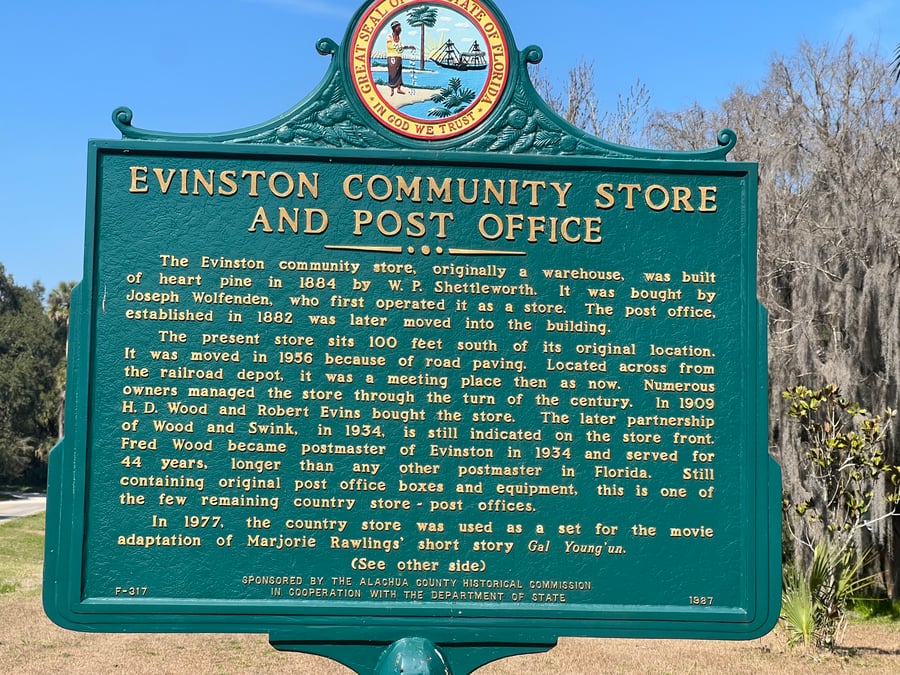
Wood and Swink Store and Post Office FL
Motorcyclist Map

Places Filter: Local Favorites
View In Google Maps: https://goo.gl/maps/BBvineptyLccSUG97
Description: The Wood & Swink Old Store and Post Office is a single-story, wooden-frame architectural structure constructed from heart pine in the year 1882 under the craftsmanship of builder William P. Shettleworth. Originally, it belonged to a prosperous merchant from Micanopy named Simon H. Benjamin, who used it as a warehousing facility for his and his business partner Jacob Katz's merchandise. In 1884, it changed hands, now under the ownership of Joseph S. Wolfendon, who was the Postmaster of Evinston at the time. It transformed into a general store around the turn of the century when John Hester took over ownership. Then, in 1906, Henry Deaver Wood and his brother-in-law, Robert C. Evins, became proprietors of the establishment. In 1910, Robert Evins passed away, leaving sole ownership to Henry Wood. Notably, Henry, who also managed a substantial farm, served as Alachua County Commissioner for four consecutive terms until his passing in 1930. After Henry's passing, his son, Robert P. Wood, assumed control of the store and post office. In 1933, he sold it to his brother, Frederick W. Wood, and his brother-in-law, Paul C. Swink. This transition marked the establishment's name change to Wood & Swink, even though Paul later sold his shares to Fred Wood in 1935. Fred served as postmaster for an impressive 44-year tenure, making him the longest-serving postmaster in Florida when he retired in 1979. Following Fred's retirement, the role of postmaster was assumed by Wilma Sue Brown-Wood, who was married to Frederick Wood, Jr. Wilma Sue continued in this role for 31 years until her retirement in 2010. At present, Scarlett Kinder is serving as the interim postmaster as the Postal Service seeks a permanent replacement. The store was managed by Jane Yongue Wood, the wife of Fred Wood Sr., until her passing in 1990. Following her demise, ownership of the store transferred to Frederick W. Wood Jr. and his wife, Wilma Sue Wood, who also served as postmaster. Around this period, Jane Wood and Diana Cohen successfully advocated for the inclusion of the building on the National Register of Historic Places, an honor it achieved in 1989.